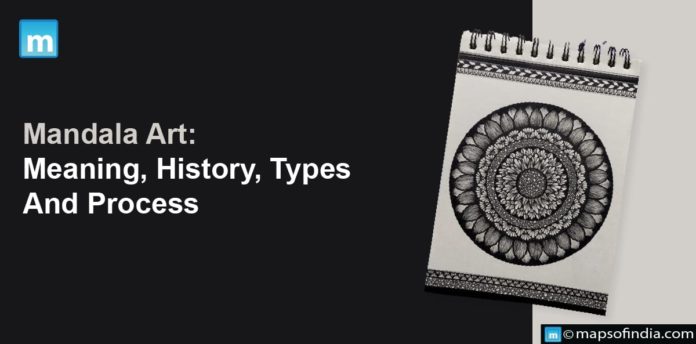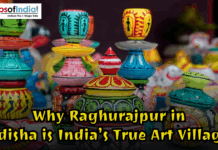Mandala art is a geometric illustration style developed in Hindu and Buddhist cultures. The term “mandala” derives from the Sanskrit word for “circle,” and mandalas are frequently circular. They can, however, be square, rectangular, or even triangular. Mandalas are used for many things, including meditation, prayer, and healing. They are also utilized as ornaments in homes and temples.
History Of Mandala Art
The term “mandala” is taken from the ancient Indian language Sanskrit, which means “circle.” Mandalas can be found in Hinduism, Buddhism, Native American traditions, and Celtic and Islamic art. This universal notion implies a link between the macrocosm representing oneness and wholeness.
Mandalas have great spiritual significance in Hindu and Buddhist cultures. They are frequently employed as meditation and concentration techniques, depicting the universe and the path to self-realization. The making and contemplation of mandalas are thought to aid in attaining inner calm and enlightenment.
Types of Mandala Art
-
Traditional Mandalas
These have their roots in Buddhist and Hindu traditions and frequently have complex geometric designs that have spiritual significance.
-
Mandalas for Emotional Healing
These mandalas are intended to encourage meditation, rest, and emotional healing. They frequently make use of calming hues and patterns.
-
Contemporary Mandalas
These mandalas are made by artists who give them a contemporary spin by including abstract or outlandish features.
-
Digital Mandalas
With the development of technology, numerous artists now produce beautiful digital mandalas utilizing graphic design software.
Benefits of Mandala Art
-
Stress Reduction
Mandalas may be a contemplative and calming experience that efficiently relieves tension and anxiety.
-
Self-Expression
Mandalas allow people to express themselves via art by using them to represent their thoughts, feelings, and inner experiences.
-
Enhanced Focus
Making a mandala demands focus and attention to detail, heightening awareness and concentration.
-
Spiritual Connection
For some people, creating mandalas is a method to explore their inner selves and connect with their spiritual beliefs.
-
Aesthetic Appeal
Mandalas have a beautiful aesthetic quality that can be enjoyed solely for that reason.
Process of Making a Mandala Art
-
Centering
The first step in the mandala art process is drawing a dot or a small shape at the center of the canvas. This focal point represents your mandala’s focus, center of being, or spiritual core.
-
Establishing Symmetry
The second step is deciding on the type of symmetry you want for your art. There are three types of symmetry to choose from – radial, bilateral, and quadrilateral. The most used type is radial, in which elements are drawn outwards from the central point. In bilateral, elements are mirrored from a vertical or horizontal axis. And in quadrilateral, elements are mirrored along both vertical and horizontal axis.
-
Drawing Shapes and Patterns
The third step is to create shapes and patterns according to your chosen symmetry. Make your art beautiful by adding circles, triangles, squares, spirals, and points.
-
Detailing
The last but not the least step is adding details to your shapes and patterns. Detailing ensures whether or not your art will stand out or not.
-
Coloring
This step is optional, but adding colours helps convey the mood and feelings associated with your art.
Conclusion
Mandala art is a timeless, global expression that cuts across cultures, faiths, and artistic movements. It is a potent tool for self-discovery and relaxation because of its long history and deep roots in spiritual and contemplative activities.




